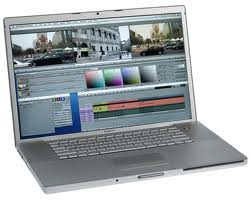Working of AVID editing machine in film production
Friday, November 18th, 2011 5:44:57 by M. Omer Iqbal bhatti
Working of AVID editing machine in film production
For most professional film and television editors, there’s no substitute for an Avid editing system. Avid has been a pioneer in the non-linear editing industry since 1989 when the fledgling Massachusetts Company introduced the first version of its Media
Composer software. The original Avid system, which included the software, an Apple desktop computer, some external hard drives, monitors and a tape deck, cost between $50,000 and $80,000.
Nearly 20 years later, Avid is still the industry leader in non-linear computer-based editing systems. From Oscar-winning films to reality TV shows, almost everything is edited on an Avid system. Avid itself won an Oscar in 1998 for Scientific and Technological
achievement for the impact that its Media Composer software (then called Film Composer) has had on the film industry.
In recent years, the price has come down on Avid software (the newest version of Media Composer retails at $2,495), which means that serious home users can now access the same high-end tools as the Hollywood pros. Although the Avid interface has a lot in
common with other higher end video editing systems — like Final Cut Pro and Adobe Premiere — it takes serious training and lots of practice to master the system’s hundreds of specialized editing and effects tools.
Let’s say you have three source tapes, labelled A, B and C. In linear editing, the editor decides which source material he wants to use first, second and third. In this case, he wants to use material from tape C first, then B and A. He starts by cuing up
tape C to the beginning of the clip he wants to use. Then he plays tape C while simultaneously recording the clip onto a master tape. When the desired clip from tape C is done, he stops recording. Then he has to do the same thing for the clips on tapes B and
A.
In non-linear editing, however, the editor has the ability to edit any segment of the project in any order he wants. He can cut, copy and paste clips from one part of the project to another just like you can cut, copy and paste text with word processing
software.
Interestingly, traditional film editing was always non-linear. A filmmaker could cut his film up into pieces and splice it together in any order he liked. However, this cut-and-splice process was painstakingly slow, greatly limited in transitions and effects
and left a lot of room for error.
Professional editors are so loyal to Avid because the company has worked hard to incorporate the suggestions of working editors into every new version of its Avid software and hardware. The result is a continuously evolving system. For example, the latest
version of Media Composer software and Avid hardware boxes include tons of improved functionality for working with high-definition (HD) video, something that editors need now more than ever.
Short URL: https://www.newspakistan.pk/?p=4000

















